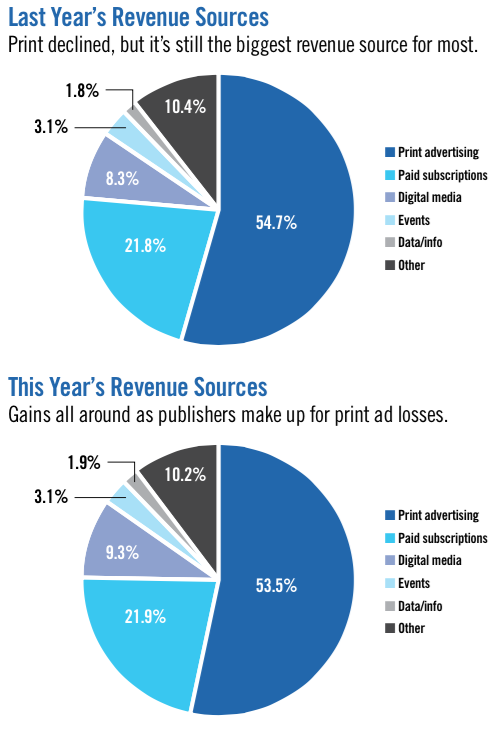[responsive] [/responsive]Association publishers were by no mean immune to the challenges faced by the magazine industry as a whole over the past five years, yet print still drives the business model.
[/responsive]Association publishers were by no mean immune to the challenges faced by the magazine industry as a whole over the past five years, yet print still drives the business model.
“They’ve survived, but it hasn’t been easy,” writes Michael Rondon in Folio:.
“Creativity, cost cutting and a focus on core publishing products have kept margins relatively stable. Print revenue is still retreating however, and digital has been slow to pick up the slack,” Rondon continues.
The article reports on the results of their survey of more than 1,000 association publishing executives and reveals some key points about 2014 and their thoughts for the coming year.
While per-member revenue has seen a drop in its five-year average, per-member spending has dropped more. The results?
“Per member profit hasn’t fallen nearly as far as a result—it’s essentially unchanged since 2011 thanks to careful cost management,” Rondon writes.
While they continue to see print revenue decline, print ads still make up the lion’s share of publishing revenue for associations.
“Add in revenue from hard-copy subscriptions and, for some, single-copy sales, and print magazines make up three-quarters (or more) of publishing revenue,” Rondon continues. “Print still drives the business. It’s not going away soon and can’t be jettisoned lightly.
Meanwhile revenue from non-publishing sources – mainly events and data/information sales – climbed up from the previous year, with those gains helping to offset print ad losses.
Digital media revenue, which many associations hoped would help close the gap on print revenues, declined this year, leading Rondon to note that “the business models that can sustain digital publishing for associations aren’t there yet. Digital media accounted for 8.3 percent of total revenue in 2013, down from an average of 8.9 percent over the last five years.”
Overall, the survey suggested that most association publishers are seeing some stability in their situations for the coming year.
“Fewer association publishers are optimistic about their revenue prospects than at any point since 2010, but a smaller number also expect declines next year,” explains Rondon. “The majority fall between those poles. Most respondents are anticipating minor changes in either direction.”
And few think the bottom is about to fall out. “As a whole, respondents anticipate industry revenue to increase 0.5 percent.”
“That may not seem like much, but it’s the highest expected bump since 2012 (a big rebound year following the recession), and the third year in a row associations have expressed confidence in their prospects for the coming 12 months,” says Rondon.
